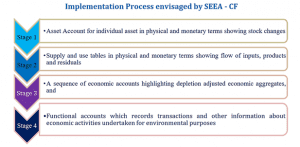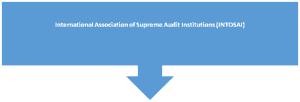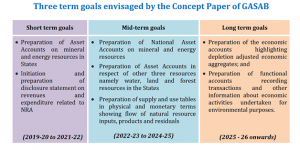DAILY CURRENT AFFAIRS (AUGUST 22, 2022)
THE GEOGRAPHY: CLIMATOLOGY
1. WHAT ARE CLOUDBURST INCIDENTS AND ARE THEY RISING ACROSS INDIA?
THE CONTEXT: Recently, Over 20 people have been killed in destruction caused by cloudbursts and flash floods in different parts of Himachal Pradesh and Uttarakhand . The Isolated areas in these two states have reported heavy rainfall during this time, triggering landslides and flash floods that have disrupted rail and road traffic, and resulted in house and wall collapses.
THE EXPLANATION:
What are cloudbursts?
• A cloudburst is a localised but intense rainfall activity. Short spells of very heavy rainfall over a small geographical area can cause widespread destruction, especially in hilly regions where this phenomenon is the most common.
• Not all instances of very heavy rainfall, however, are cloudbursts. A cloudburst has a very specific definition: “Rainfall of 10 cm or more in an hour over a roughly 10 km x 10-km area is classified as a cloudburst event. By this definition, 5 cm of rainfall in a half- hour period over the same area would also be categorized as a cloudburst”.
• During a cloudburst event, a place receives about 10% of this annual rainfall within an hour. It is a worse situation than what Mumbai had experienced on July 26, 2005, which is one of the most extreme instances of rainfall in India in recent years. At that time, Mumbai had received 94 cm of rain over a 24-hour period, resulting in deaths of over 400 people and more than USD 1 billion in economic losses.
How common are cloudbursts?
• Cloudbursts are not uncommon events, particularly during the monsoon months. Most of these happen in the Himalayan states where the local topology, wind systems, and temperature gradients between the lower and upper atmosphere facilitate the occurrence of such events.
• However, not every event that is described as a cloudburst is actually, by definition, a cloudburst. That is because these events are highly localized. They take place in very small areas which are often devoid of rainfall measuring instruments. The consequences of these events, however, are not confined to the small areas.
• Because of the nature of terrain, the heavy rainfall events often trigger landslides and flash floods, causing extensive destruction downstream. This is the reason why every sudden downpour that leads to destruction of life and property in the hilly areas gets described as a “cloudburst”, irrespective of whether the amount of rainfall meets the defining criteria. At the same time, it is also possible that actual cloudburst events in remote locations aren’t recorded.
EFFECT OF CLOUDBURSTS:
1. Flash floods
2. Accompanying effect of Cloudbursts on terrain
• Landslides
• Mudflows
• Land caving
• Flash floods – houses and establishments getting swept away and cave-ins lead to the deaths.
How is cloudburst different from rainfall?
• Rain is condensed water falling from a cloud while cloudburst is a sudden heavy rainstorm. A report in the Down to Earth said a cloudburst is different from rain only in the amount of rainfall recorded. Rain over 100mm per hour is categorised as a cloudburst.
• Hence, we can say the cloudburst is a natural phenomenon, but occur quite unexpectedly, very abruptly, and rather drenching. In the Indian Subcontinent, it generally occurs when a monsoon cloud drifts northwards, from the Bay of Bengal or the Arabian Sea across the plains than on to the Himalaya that sometimes brings 75 millimetres of rain per hour.
Are cloudburst incidents increasing?
• There is no long-term trend that suggests that cloudbursts, as defined by the IMD, are rising. However, is that incidents of extreme rainfall, as also other extreme weather events, are increasing — not just in India but across the world.
• While the overall amount of rainfall in India has not changed substantially, an increasing proportion of rainfall is happening in a short span of time. That means that the wet spells are very wet, and are interspersed with prolonged dry spells even in the rainy season.
THE GOVERNANCE
2. WHAT IS NAFIS — AND THE STORY OF HOW FINGERPRINTING BEGAN IN INDIA
THE CONTEXT: Recently the Union Home Minister inaugurated the National Automated Fingerprint Identification System (NAFIS) during a two-day National Securities Strategies (NSS) Conference 2022 held in New Delhi.
THE EXPLANATION:
According to the Ministry of Home Affairs, NAFIS, which was developed by the National Crime Records Bureau (NCRB), would help in the quick and easy disposal of cases with the help of a centralised fingerprint database.
What is NAFIS?
• Conceptualized and managed by the NCRB at the Central Fingerprint Bureau (CFPB) in New Delhi, the National Automated Fingerprints Identification System (NAFIS) project is a country-wide searchable database of crime- and criminal-related fingerprints. The web-based application functions as a central information repository by consolidating fingerprint data from all states and Union Territories. According to a 2020 report by the NCRB, it enables law enforcement agencies to upload, trace, and retrieve data from the database in real time on a 24×7 basis.
• NAFIS assigns a unique 10-digit National Fingerprint Number (NFN) to each person arrested for a crime. This unique ID will be used for the person’s lifetime, and different crimes registered under different FIRs will be linked to the same NFN. The 2020 report states that the ID’s first two digits will be that of the state code in which the person arrested for a crime is registered, followed by a sequence number.
• By automating the collection, storage, and matching of fingerprints, along with digitizing the records of fingerprint data, NAFIS will “provide the much-needed unique identifier for every arrested person in the CCTNS (Crime and Criminal Tracking Network & Systems) database as both are connected at the backend,” former NCRB director Ram Phal Pawar had said in December 2020.
Is this the first time that such an automation project is being attempted?
Upon the recommendations of the National Police Commission in 1986, the Central Fingerprint Bureau first began to automate the fingerprint database by digitizing the existing manual records through India’s first Automated Fingerprint Identification System (AFI) in 1992, called Fingerprint Analysis & Criminal Tracing System (FACTS 1.0).
The latest iteration, FACTS 5.0, which was upgraded in 2007, was considered to have “outlived its shelf life”, according to a 2018 report by the NCRB and thus needed to be replaced by NAFIS.
Since when has India relied on fingerprinting as a crime-fighting tool?
A system of fingerprinting identification first emerged in colonial India, where it was tested before it spread to Europe and beyond. At first, it was used by British colonial officials for administrative rather than criminal purposes. William Herschel, the chief administrator of the Hooghly district of Bengal, from the late-middle 1800s onwards, used fingerprinting to reduce fraud and forgeries, in order to ensure that the correct person was receiving government pensions, signing land transfer deeds, and mortgage bonds.
POINTS TO NOTE: Anthropometry, the measurement of physical features of the body, was used by officials in India, but was soon replaced with a system of fingerprints, which were seen to be more accurate as it was believed that no two people can have identical sets of patterns, wrote the historian Simon A Cole in his book ‘Suspect Identities: A History of Fingerprinting and Criminal Identification’.
How did the use of fingerprinting develop in crime fighting in India?
The uniqueness of every individual’s fingerprints was first proposed in Europe by the German anatomist Johann Mayer in 1788, and was confirmed through detailed studies by the Scottish doctor Henry Faulds around the same time that Herschel had begun to implement fingerprinting as a means of identification in Bengal.
THE ECONOMIC DEVELOPMENTS
3. UPI PAYMENT CHARGES: WHY FINMIN HAD TO CLARIFY THERE’S NO MOVE TO LEVY FEE
THE CONTEXT: Recently,the Reserve Bank of India (RBI) came out with a discussion paper seeking stakeholder views on charges in payment systems, the Finance Ministry clarified that there is “no consideration” in the government to levy any charges for Unified Payments Interface (UPI) services.
THE EXPLANATION:
What did the RBI discussion paper say?
• In a discussion paper released, the RBI had asked stakeholders if merchant discount rate (MDR), a fee paid by merchants to acquiring banks, should be brought back for UPI transactions. However, the RBI had said that at this stage, it is “reiterated that RBI has neither taken any view nor has any specific opinion on the issues raised in this discussion”.
• It covered all aspects relating to charges in payment systems such as Immediate Payment Service (IMPS), National Electronic Funds Transfer (NEFT) system, Real Time Gross Settlement (RTGS) system and Unified Payments Interface (UPI) and various payment instruments such as debit cards, credit cards and Prepaid Payment Instruments (PPIs), etc.
What is MDR?
• MDR, or merchant discount rate, on UPI transactions has been a long-standing demand of the payments industry. Most other modes of digital retail payments attract a charge on transactions. Currently, the government has mandated a “zero-charge framework” for UPI transactions, with effect from January 1, 2020.
What was the government’s argument?
• Terming UPI services as a “digital public good”, the Finance Ministry stepped in on to clarify that the concerns for the service providers for cost recovery have to be met through other means. “UPI is a digital public good with immense convenience for the public and productivity gains for the economy. According to the Government there is no consideration to levy any charges for UPI services.
What has the government done so far to promote UPI payments?
• In the Budget speech for 2022-23, Finance Minister had said: “The financial support for digital payment ecosystem announced in the previous Budget will continue in 2022-23. This will encourage further adoption of digital payments. There will also be a focus to promote use of payment platforms that are economical and user friendly”.
• The government allocated Rs 200 crore for reimbursement of charges towards RuPay debit card and UPI transactions. In 2021-22, it had budgeted Rs 1,500 crore towards this.
VALUE ADDITION:
What is UPI?
• Unified Payments Interface (UPI) is an instant real-time payment system, allowing users to transfer money on a real-time basis, across multiple bank accounts without revealing details of one’s bank account to the other party.
• UPI is currently the biggest among the National Payments Corporation of India (NPCI) operated systems including National Automated Clearing House (NACH), Immediate Payment Service (IMPS), Aadhaar enabled Payment System (AePS), Bharat Bill Payment System (BBPS), RuPay etc.
• The top UPI apps include PhonePe, Paytm, Google Pay, Amazon Pay and BHIM, the latter being the Government offering.
What is BHIM?
• Bharat Interface for Money (BHIM) is India’s digital payment application (app) that works through UPI, a system that powers multiple bank accounts into a single mobile application.
• Developed by National Payments Corporation of India (NPCI).Allows real time fund transfer. Launched in December, 2016.
The BHIM app has three levels of authentication:
• For one, the app binds with a device’s ID and mobile number.
• Second a user needs to sync whichever bank account (UPI or non-UPI enabled) in order to the conduct transaction.
• Third, when a user sets up the app they are asked to create a pin which is needed to log into the app. The UPI pin, which a user creates with their bank account is needed to go through with the transaction.
THE ENVIRONMENT, ECOLOGY AND CLIMATE CHANGE
4. WHAT ARE ‘FOREVER CHEMICALS’ THAT ARE CONTAMINATING RAINWATER GLOBALLY?
THE CONTEXT: A recent study published in Environment Science and Technology has found that rainwater from many places across the globe is contaminated with “per- and polyfluoroalkyl substances,” (PFAs), which are called “forever chemicals” because of their tendency to stick around in the atmosphere, rainwater and soil for long periods of time.
THE EXPLANATION:
What are PFAs?
• According to the US Centre for Disease Control and Prevention (CDC), PFAs are man-made chemicals used to make nonstick cookware,water-repellent clothing, stain-resistant fabrics, cosmetics, firefighting forms and many other products that resist grease, water and oil. PFAs can migrate to the soil, water and air during their production and use.
• Since most PFAs do not break down, they remain in the environment for long periods of time. Some of these PFAs can build up in people and animals if they are repeatedly exposed to the chemicals.
What harm do PFAs cause?
• The United States Environmental Protection Agency (EPA) lists a variety of health risks that are attributed to PFA exposure, including decreased fertility, developmental effects in children, interference with body hormones, increased cholesterol levels and increased risk of some cancers. Recent research has also revealed that long-term low-level exposure to certain PFAs can make it difficult for humans to build antibodies after being vaccinated against various diseases.
Do we need to be worried about PFAs in the rainwater in India?
• While the recently published research article did not include studies of samples collected in India, the nature of PFAs and the wide geographical breadth of samples and the nature of PFAs means that the results can be extrapolated to India, according to lead author Ian Cousins, who spoke to indianexpress.com over an email interaction regarding the same.
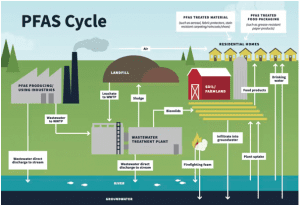
How can these chemicals be removed from rainwater?
• While there is no known method that can extract and remove PFAs from the atmosphere itself, there are many effective, albeit expensive, methods to remove them from rainwater that has been collected through various rainwater harvesting methods. One way to do this would be to use a filtration system with activated carbon. The activated carbon will need to be removed and replaced regularly. Also, the old contaminated material must be destroyed.
5. INDIA’S FIRST INDIGENOUSLY DEVELOPED HYDROGEN FUEL CELL BUS
THE CONTEXT: Recently, the Union Minister of Science and Technology launched India’s first truly indigenously developed Hydrogen Fuel Cell Bus developed by KPIT-CSIR in Pune.
THE EXPLANATION:
• This bus has zero emissions compared to a diesel bus plying on long distance routes which usually emits 100 tonnes of CO2 annually.
• In terms of CO2 emissions, about 12-14 percent of CO2 emissions in India come from diesel-powered heavy vehicles. At the same time, hydrogen fuel cell vehicles will prove to be excellent means to eliminate on-road emissions in the region.
WHAT IS HYDROGEN FUEL CELL TECHNOLOGY?
• In HFC technology, a chemical reaction is made between hydrogen and oxygen to produce electrical energy. It does not use conventional fossil fuels such as petrol or gas. In its true sense, a fuel cell stack refers to batteries that generate electrical energy, which do not require much space to store.
• The biggest feature of this fuel cell technology is that it emits only water, thus cutting down on emissions of harmful greenhouse gases along with other air pollutants. Therefore, this technology is probably the most eco-friendly mode of transport.
• This technology also works at 65-75 degree Celsius temperature which can withstand the heat generated while driving.
• Japan is a leader in the use of fuel cell technology. In the context of controlling air pollution, it is necessary that India learns from Japan’s technology for the use of clean energy.
WHAT IS THE ADVANTAGE OF A HYDROGEN FUEL CELL-POWERED VEHICLE?
• The primary advantage of hydrogen fuel cell electric vehicles (FCEV) is that they produce no tailpipe emissions. They only emit water vapour and warm air. Another advantage is that they are more efficient than internal combustion engine vehicles.
• Hydrogen fuel cell electric vehicles have another advantage when it comes to refuelling time, which makes them more practical than battery-powered electric vehicles for public transportation purposes. Even with the fastest charging technologies, it could take hours to charge a battery-powered electric bus. Meanwhile, hydrogen can be refilled in a fuel cell vehicle in a matter of minutes, nearly as fast as an internal combustion engine can be refilled with fossil fuels.
• While this disadvantage may not be a major issue for battery-powered personal vehicles, for buses and other public vehicles, it could mean that an important asset is out of use for a large part of the day because it needs to be charged.
Are hydrogen fuel cell vehicles environmentally friendly?
• One crucial point to note is that using a battery-powered electric vehicle doesn’t mean that the vehicles produce no emissions, but rather, that they produce no tailpipe emissions. Since a majority of the electricity in the country comes from fossil fuels, and the biggest source of hydrogen in the world currently is also fossil fuels, these vehicles do cause a large number of emissions with their usage.
• But just like we are moving towards renewable sources of electricity, we could also move towards renewable methods of generating hydrogen in the future. So even if these vehicles do contribute to emissions right now, the fuel that they need could be produced using renewable methods such as solar and wind energy.
THE PRELIMS PERSPECTIVE
6. WHAT IS MANDALA IN ART?
THE CONTEXT: Recently, some residents of Liverpool in the UK are marvelling over a mandala art the size of one and a half football pitches in length created by artist James Brunt with materials such as leaves and rocks.
THE EXPLANATION:
What is Mandala Art?
• Literally meaning “circle” or “centre” in Sanskrit, a mandala art is defined by a geometric configuration that usually incorporates the circular shape in some form.
incorporates the circular shape in some form.
• Mandala patterns are a centuries-old motif that are used to depict the cosmos, and have been adapted by artists the world over, each of whom have added their own interpretation and painted it as their own.
• While it can also be created in the shape of a square, a mandala pattern is essentially interconnected.
The origin
• It is believed to be rooted in Buddhism, appearing in the first century BC in India.
• In Hinduism, the mandala imagery first appeared in Rig Veda (1500 – 500 BCE).
• Over the next couple centuries, Buddhist missionaries travelling along the Silk Road took it to other regions.
• By the sixth century, mandalas have been recorded in China, Korea, Japan, Indonesia and Tibet.
The meaning of the motif
• It is believed that by entering the mandala and moving towards its center, one is guided through the cosmic process of transforming the universe .
• It depicts transition from one of suffering to that of joy.
• A traditional Buddhist mandala, a circular painting drawn with coloured sand, aided in meditation, with the main objective of aiding its creator to discover their true self.
• In Hinduism, a mandala or yantra is in the shape of a square with a circle at its center.
• There are various elements incorporated within the mandala, each of which has its own meaning.
• For instance, the eight spokes of the wheel (the dharmachakra) represent the eightfold path of Buddhism, the lotus flower depicts balance, and the sun represents the universe.
• Facing up, triangles represent action and energy, and facing down, they represent creativity and knowledge.
Mandala in modern Indian art
• Deep-rooted in ancient philosophy, the mandala has attained varied forms in the hands of modern and contemporary Indian artists.
• While it continues to appear in thangka paintings, it has a central place in the practice of mainstream artists associated with the tantric and neo-tantric spiritual movements.
• Choosing to transition from the more figurative depictions of the previous generations of Indian artists, in the 1960s Sohan Qadri and Prafulla Mohanty gained widespread recognition for their works.
• Their work is imbibed in tantric symbolism, such as mandalas that are also used in the rituals of tantric initiation.
7. DAHI-HANDI’ – MAHARASHTRA’S OFFICIAL SPORT
THE CONTEXT: Recently, DahiHandi has now been given the status of a game in Maharashtra. It will be considered as a type of adventure sports.
THE EXPLANATION:
• Recently the Maharashtra Chief Minister announced that Govindas who join Dahi Handi will be given benefits of government schemes, 5 percent reservation in government jobs.
• Govindas will now also be given insurance protection. If there is an accident while playing Dahi Handi and any Govinda dies in such a situation, then an amount of Rs 10 lakh will be given to the family members of the concerned Govinda as help.
• In case of serious injury like if any Govinda loses both eyes or both legs or both hands or any two important parts of the body, then an amount of 7 and a half lakh rupees will be given to him as help from the state government.
• In such an accident, if any Govind loses an arm or a leg or any part of the body, then in such a situation, an amount of 5 lakh rupees will be given to him as help.
What is DahiHandi?
• DahiHandi is celebrated on the occasion of Janmashtami, the birth of lord Krishna. The DahiHandi (earthen pots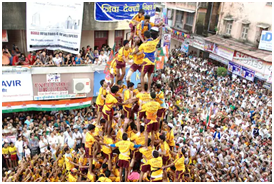 filled with yogurt) is part of the Janmashtami festival where young participants called ‘Govindas’, dressed in colorful clothes, make a human pyramid to reach the pot hung mid-air, and break it.
filled with yogurt) is part of the Janmashtami festival where young participants called ‘Govindas’, dressed in colorful clothes, make a human pyramid to reach the pot hung mid-air, and break it.
• The tradition of DahiHandi, which started in Mumbai in 1907, is believed to have been going on for the last 104 years in Ghansoli village near Navi Mumbai. DahiHandi was first started here in 1907 on the occasion of Krishna Janmashtami.
• DahiHandi festival held every year in Mayanagari is celebrated all over the world. Not only the country but people from abroad also come here to see the Dahi Handi festival. Some circles also give a reward of crores for breaking the handi.
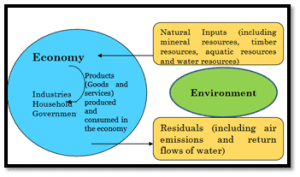 elements of SD is that it provides an outline of resource bases, and pace of usage with an eye on their sustainability and embeds environmental aspects into the economic indices.
elements of SD is that it provides an outline of resource bases, and pace of usage with an eye on their sustainability and embeds environmental aspects into the economic indices.